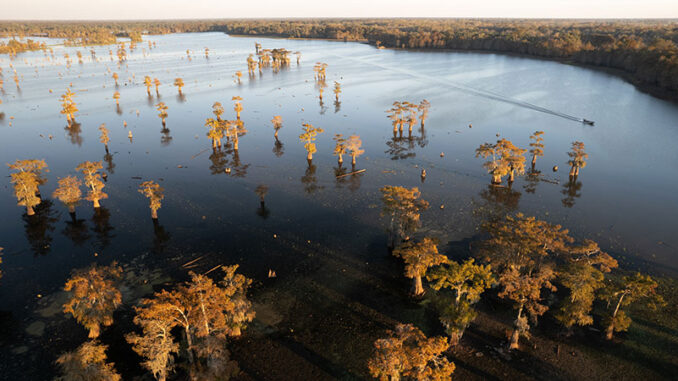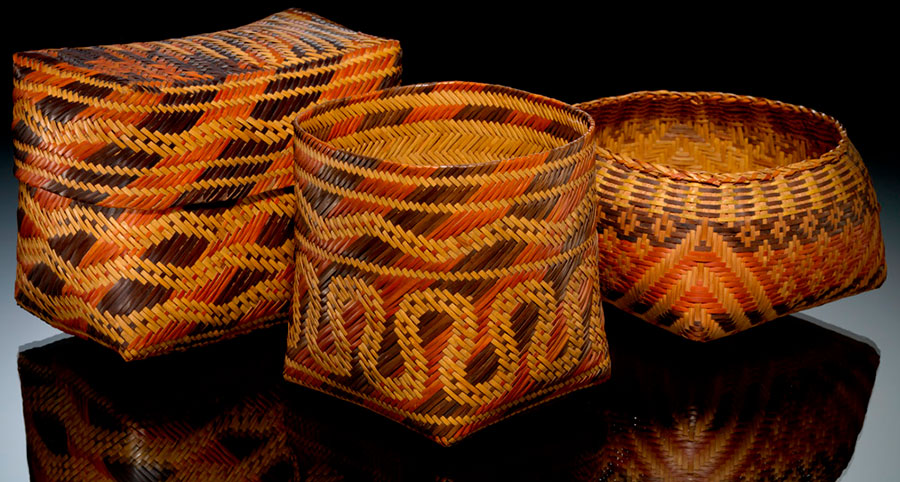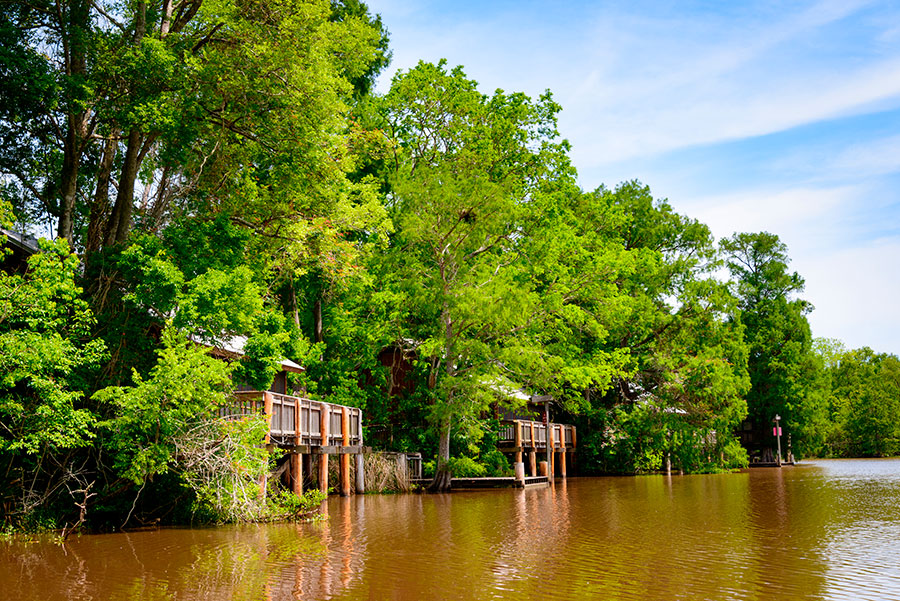
The Atchafalaya River is a distributary of the Mississippi River, leaving the Mississippi near Simmesport and running approximately 125 miles to empty into the Gulf near Morgan City. Its long, 35-mile-wide floodplain is America’s largest swamp wilderness.
Atchafalaya is a Choctaw Indian word meaning “long river” and derives from the words hachcha, meaning “river,” and falaya, meaning “long.”
The Chitimacha Indians, who are now a federally recognized tribe with a reservation at Charentan, have been living in the Atchafalaya Basin for hundreds of years. Some say that the small community of Butte la Rose is named for a Chitimacha chief whose last name was Rose (“butte” is French for “a small hill”).
The Chitimacha, who became famous for their beautiful split-cane baskets, lived off the Atchafalaya’s incredible bounty. Today’s sportsmen can also enjoy hunting and fishing in the basin at the Attakapas Island, Thistlethwaite and Sherburne Wildlife Management Areas (WMAs).

The 27,962-acre Attakapas Island WMA gets its name from the Attakapas Indians who lived in the area. Attakapas (which has various spellings) is a corruption of the Choctaw Indian phrase “hattak apa,” which means “man eaters.”
Whether or not the Attakapas truly were cannibals is a matter of debate. One Frenchman was taken captive by the Attakapas and claimed to have witnessed them torture and eat an enemy warrior. Modern anthropologists, however, say the term “man eaters” was simply a colonial metaphor for enslaving captured enemies.
WMA treasures
The Thistlewaite WMA is named for the family that owns the 11,100 acres. In 1966, the Thistlewaites signed a lease agreement with the Department of Wildlife and Fisheries to create the WMA and to open the land for public use. Three years ago, the family renewed the lease, ensuring Louisianians will be able to enjoy the land for years to come.
Sherburne WMA is actually named for a ghost town. When large timber companies cut out most of the Great Lakes’ forests in the 1880s, they moved to Louisiana to harvest its virgin pine and cypress trees. Logging towns sprang up all over the state, including the town of Sherburne near the Atchafalaya River.
Within a few decades, however, the timber was logged out and many of the towns were abandoned. Sherburne’s final demise came in 1939 when the federal government ordered it abandoned from fear the Morganza Spillway would flood it. Today, the Sherburne WMA headquarters is located on the site of the old town.
Lake Fausse Pointe State Park
The Attakapas Island, Thistlewaite and Sherburne WMAs are all within an hour or so drive from Lake Fausse Pointe State Park, near St. Martinville.

Fausse Pointe is French for “false point.” The Atchafalaya River and Lake Fausse Pointe used to be joined together, but when a levee was constructed across the area in the 1930s for flood control, they were permanently separated.
The 6,000-acre Lake Fausse Pointe State Park has furnished cabins, RV pads with sewer, water and electricity service, and premium camping sites with water and electricity. For those who would like to fish when not hunting, a boat launch gives access to miles of waterways. If you don’t have a boat, they can be rented on site.
Three hiking trails and a 7-mile canoe trail also provide excellent bird watching and wildlife viewing opportunities.